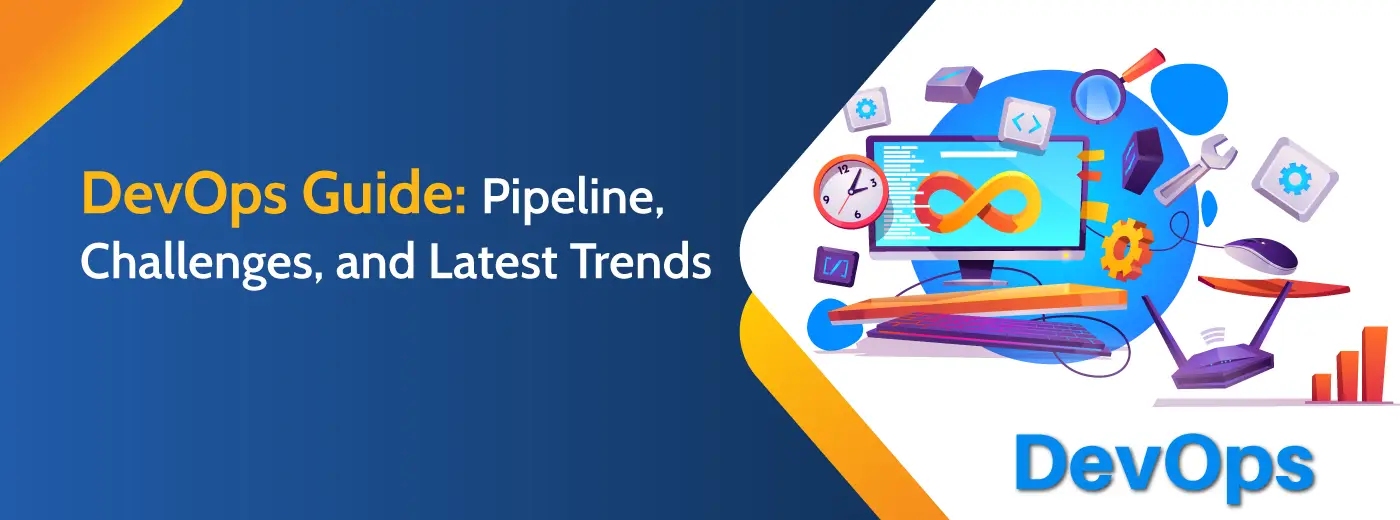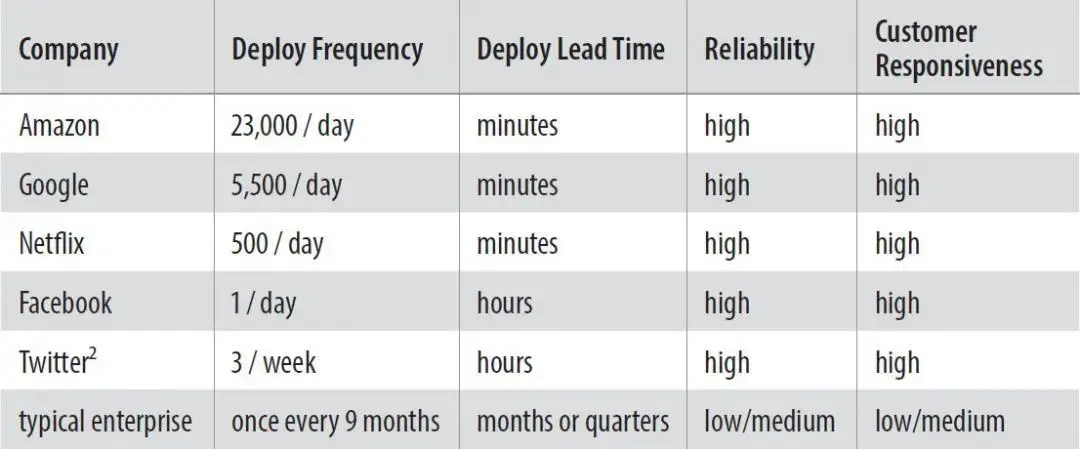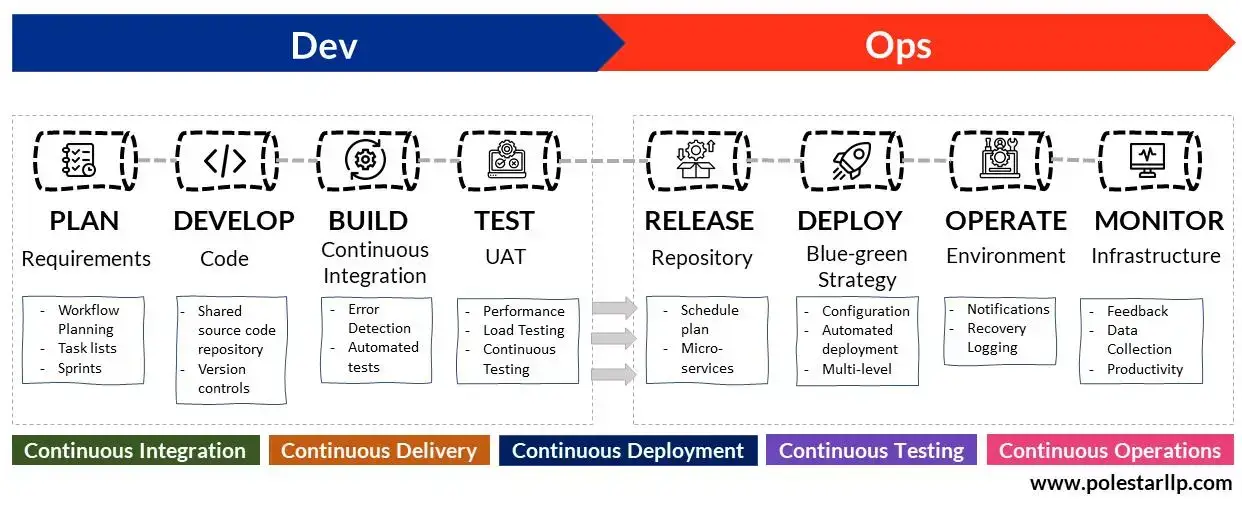
Sign up to receive latest insights & updates in technology, AI & data analytics, data science, & innovations from Polestar Analytics.
The interest in DevOps has been rising greatly over the past few years. Don’t trust us. Check out the Google trends results yourself. In case you are new to the topic or want to know more about the DevOps Pipelines and key challenges in DevOps implementation, you are in the right place, so keep reading. We will also look into some of the latest research in this field.
We have previously discussed in the Top 5 Trends in DevOps, how DevOps is similar to the Agile Methodology and will help in Shift Left Testing. But let’s also understand briefly what DevOps is all about.
DevOps is a combination of philosophy and tools that increase an organization’s ability to collaborate and deliver outcomes (products and services) at a faster rate, by merging the Development and Operations teams. Under the DevOps model, Development (Dev) and Operations (Ops) are merged into a single team, where everyone works across the entire Software Development Life Cycle. With this process, speed, reliability, security, and collaboration can be enhanced.
Although this sounds simple, it has some practical challenges that we are going to assess in the latter half of this read. Before that let’s understand a few questions you might have and what DevOps Pipeline is.
If you have this question in mind, then you might find one of the best examples in the book Phoenix Project by Gene Kim. Taking an excerpt from the book:

Source: The Phoenix Project
As you can see organizations like Amazon, Google, Netflix, etc., have a higher deployment frequency which gives the flexibility and ease to handle issues that arise daily. So, if you want a collaborative, time and cost-effective solution for your software development then DevOps is the way to go.
Pipeline in this case is like a horizontal transfer from one phase to another. Like any software process, this will include the build, test, and deployment of processes, continuously. In this pipeline, we discuss the various processes involved in the implementation of DevOps. All the stages of a DevOps pipeline are listed below:

Though there are no fixed rules or steps as to how to structure the pipeline, we have bifurcated them into various levels. But the core steps in them are: Develop, Build, Test, and Deploy. But even the other activities are important when better results are required in the long run. The eight activities in the DevOps Pipeline are:
Briefly speaking about the activities, the Planning stage involves planning the requirements and the entire workflow before the developers even start the coding. It is usually done by segmenting the project into smaller chunks. In the Develop and Build phase, you build the source code and collaborate in a shared source code repository and perform continuous integration and delivery. With automated testing, you can ensure an error-free code passing through the pipeline.
In the Test, Release, and Deployment phases you run manual, and automated tests and validate the finalized code. For Deployment, a blue-green deployment strategy which is having two identical production environments can be used, or automated deployment in case of minor changes. Finally, in the Operate and Monitor stages, you collect data from logs, monitor systems, and get feedback from all the processes to improve efficiency.
So, by now you must have understood that DevOps is, like any other software development process like Agile, Lean, Scrum, or Waterfall and has its own stages.
DevOps is the ultimate automation and integration process, you can find some similar processes that have evolved with it like DevSecOps (inclusion of Development, Security, and Operations). But it would face some challenges which are similar to other software implementations and some different. Let’s see some of the challenges that one might face with DevOps adaptation:
1. Integration of tools across domains
Throughout the article, you will find the “Continuous” re-appearing with different suffixes, it is the same here. One of the key factors and the best practice in DevOps is to have continuous integration. But not every organization has the capability to build and deploy processes along with continuous integration, which results in the process being slowed down and having larger changes over a longer period than short stints. So having the capability to have REST APIs or capabilities to have integration is required.
2. Moving towards Micro-services
Microservices is a type of architecture design approach, where multiple services use different frameworks or languages to be formulated and they are simultaneously deployed as a single or a group of services. Sounds complicated? It is similar to breaking down a process and performing each of the sub-process independently. With the addition of Infrastructure-as-a-code to the micro-services to have continuous delivery and innovation possible.
3. Disparate tools choice
Development and Operations teams can have different tools they rely upon for their work. So even before the implementation starts there is a need to identify and synchronize both the teams for their tools and expectations.
4. Lack of vision
At the end of the day, you want two or more separate teams to collaborate as one, for which a vision is defined with the key responsibilities of each of the teams and remove the wall between them. This can be done by experimenting with a few software processes or for a product and recreating with DevOps practices.
There are a lot more challenges, but let’s restrict our talk to these. The challenges will give you an idea of what to expect and what not to do in your DevOps implementation. But what is the reality?
Let’s try to answer this question with a recent study by CloudBot Software. This study includes insights from 200 global IT leaders.
Now let’s look at the adoption rates of DevOps, importance levels, and the overall current status of DevOps among IT companies.
Importance of CI/CD Infrastructure
97% of respondents agree that testing CI/CD infrastructure is important for their organization and 85% claim to regularly test that infrastructure. This shows that most people believe in the concept and its workings but they are facing issues when it comes to implementation.
Rates of Deployment
Only 5% percent of companies agree to have multiple deployments every day, and a whopping 85% agree that they have deployments on a weekly or monthly basis. This is because most companies resist the change to transition from traditional infrastructure to micro-services.
Expertise with DevOps
And despite all the tools, process improvements, and investments made, only 4% of companies consider themselves experts in CI/CD. And only 11% consider CI/CD infrastructure reliable.
Some of the key reasons for the lack of implementation of the infrastructure is that
Sounds familiar? This is what we were talking about in the previous section about the Challenges faced. As mentioned, it is important to find the common ground between the teams and contribute with a vision in mind.
And according to Gartner’s “Hype Cycles for Agile and DevOps” in both 2020 & 2021, DevSecOps falls on the slope of enlightenment and is expected to reach mainstream adoption in 2 to 5 years. So, this would be the right time to start thinking about the long-term adoption and software implementation in organizations.
DevOps received such a great process as it promotes collaboration and is very useful for making innovation possible with a few steps but the reluctance with the implementation comes deep down with the lack of capabilities and infrastructure, where you might need expert guidance.
It is here where Polestar Analytics can bring in its Data, Analytics, Cloud, Development, and Operations experience to bring personalized solutions, processes, and expertise to your organization. All you need to do is drop a message!
About Author

Data & BI Addict
When you theorize before data - Insensibly one begins to twist facts to suit theories, instead of theories to suit facts.